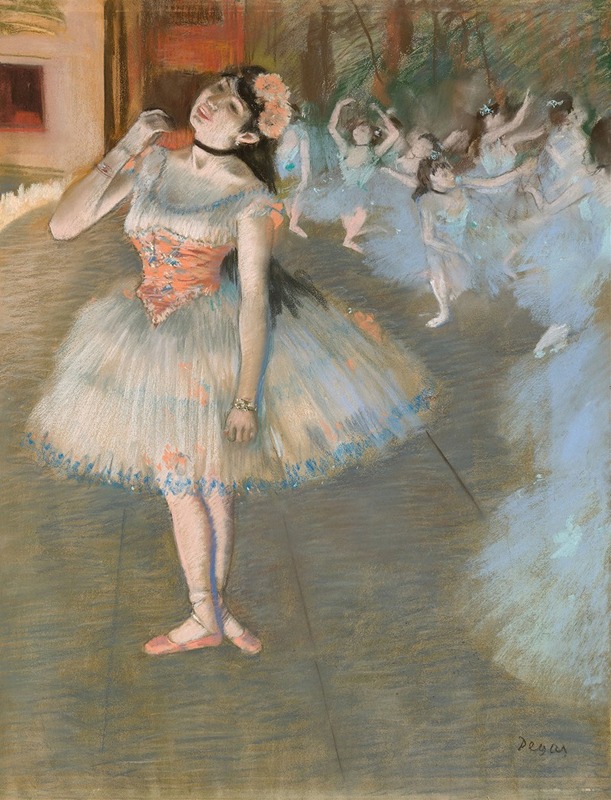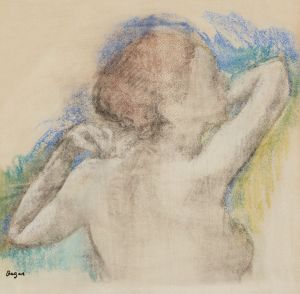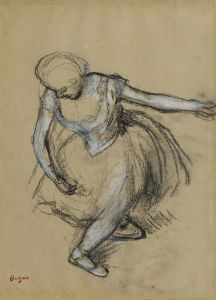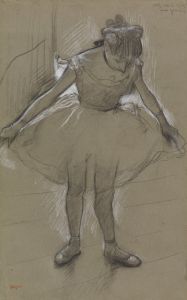
The Star
A hand-painted replica of Edgar Degas’s masterpiece The Star, meticulously crafted by professional artists to capture the true essence of the original. Each piece is created with museum-quality canvas and rare mineral pigments, carefully painted by experienced artists with delicate brushstrokes and rich, layered colors to perfectly recreate the texture of the original artwork. Unlike machine-printed reproductions, this hand-painted version brings the painting to life, infused with the artist’s emotions and skill in every stroke. Whether for personal collection or home decoration, it instantly elevates the artistic atmosphere of any space.
Edgar Degas, a prominent French artist known for his contributions to Impressionism, created "The Star" (also known as "L'Étoile") around 1878. This painting is one of Degas's many works that focus on the world of ballet, a subject he frequently explored throughout his career. Degas's fascination with ballet dancers is evident in his numerous paintings, pastels, and sculptures that capture the grace, movement, and behind-the-scenes moments of the dance world.
"The Star" depicts a ballerina performing on stage, bathed in the glow of stage lights. The dancer is the central focus of the composition, capturing the viewer's attention with her poised elegance and the dynamic sense of movement. Degas's use of light and shadow in this painting highlights the dancer's form and the texture of her tutu, creating a sense of immediacy and presence. The background is filled with a darkened audience and other dancers, providing a contrast that emphasizes the star's prominence on stage.
Degas's technique in "The Star" showcases his mastery of capturing movement and his innovative use of perspective. The painting is noted for its unusual viewpoint, as if the viewer is looking up at the dancer from the orchestra pit. This perspective adds a sense of intimacy and immediacy, drawing the viewer into the performance. Degas often employed such unconventional angles in his work, reflecting his interest in photography and Japanese prints, which were known for their unique compositions and perspectives.
The medium used for "The Star" is pastel on paper, a choice that allowed Degas to achieve a soft, luminous quality in the depiction of the dancer and her surroundings. Pastel was a favored medium for Degas, as it enabled him to work quickly and capture the fleeting moments of movement and light that characterized his ballet scenes. The delicate application of pastel in "The Star" enhances the ethereal quality of the dancer and the atmosphere of the performance.
Degas's focus on ballet dancers was not merely an exploration of beauty and grace; it also reflected his interest in the discipline, dedication, and physical demands of the dance profession. His works often reveal the contrast between the public performance and the private, behind-the-scenes world of the dancers, offering a glimpse into the rigorous training and preparation that underlie the seemingly effortless performances.
"The Star" is housed in the Musée d'Orsay in Paris, which holds one of the most extensive collections of Degas's works. The painting remains a testament to Degas's ability to capture the essence of movement and the ephemeral beauty of the ballet, making it a significant piece in the study of Impressionist art and Degas's oeuvre. Through "The Star," Degas invites viewers to appreciate not only the visual spectacle of the ballet but also the artistry and dedication of the dancers who bring it to life.


















